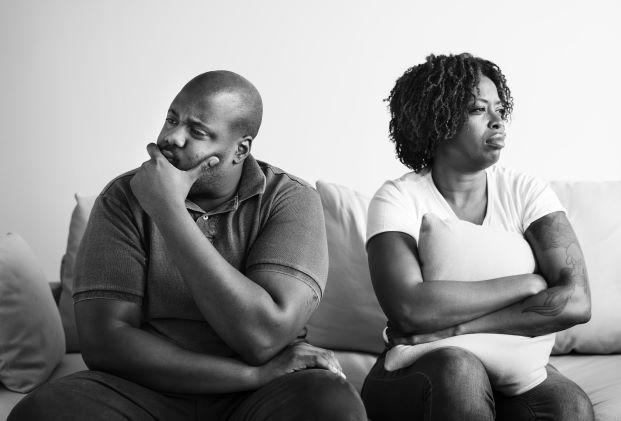A tendency for one or both spouses to avoid or withdraw from tough conversations could set up married couples for emotional distress, bad feelings about their relationship, chronic inflammation and lowered immune function, new research suggests.
The analysis revisits data from a 2005 Ohio State University study that showed the stress couples feel during a brief argument could slow their bodies’ ability to heal from wounds by at least a day – a landmark finding at the time showing how psychological stress affects immunity.
A fresh look at the data shows that when married couples typically communicate with each other in negative ways, both spouses – and women in particular – suffer emotionally and their immune function wanes, in the form of having wounds that take longer to heal. The analysis revealed that the health consequences of negative communication patterns were evident even before the 2005 study began: These couples arrived at the lab with higher blood markers for inflammation.
The initial trial showed that one stressful argument – in a lab, recorded and analyzed by researchers – could harm immune function. This new study suggests that the more combative arguments in the lab were linked to more negative typical marital communication for these couples – and those daily patterns are a likely culprit behind persistent negative emotions and biological markers that can lead to poorer health outcomes.
“Marriage is associated with better health, but chronically distressed marriages can worsen health,” said first author Rosie Shrout, who completed this work as a postdoctoral researcher in Ohio State’s Institute for Behavioral Medicine Research (IBMR). “It’s important to understand what is going on behind the scenes that contributes to these effects.
“What we’re seeing is that both chronic daily negativity and acute negativity, and their combination – experiencing both of those – is particularly bad for couples’ emotions, relationships and immune functioning,” said Shrout, now an assistant professor of human development and family science at Purdue University.
The new study was published recently in the journal Psychoneuroendocrinology.
The 2005 research was co-led by Jan Kiecolt-Glaser, senior author of the new study and professor emerita of psychiatry and psychology at Ohio State, whose decades of discoveries as a leader of the IBMR have shown the many ways in which stressful life events are detrimental to health.
The 2005 work involved 42 married heterosexual couples who had been together for an average of 12 years. Researchers tested the baseline level of a proinflammatory protein in their blood and used a device to raise small blisters on each partner’s forearm – the wounds’ healing progress was monitored as an indicator of how well each participant’s immune system was functioning.
Participants completed questionnaires assessing their typical communication patterns when problems arise – mutual constructive or symmetrical positive communication, or variations of negative communication patterns that involved either mutual avoidance or instances where one partner made demands and the other withdrew from the discussion in response.
Couples were recorded having discussions in two separate lab visits: The first focused on social support and the second was an attempt to resolve a known source of tension in the marriage, such as finances or in-laws. Researchers coded negative and positive behaviors during these talks.
In follow-ups, couples evaluated the discussions – whether they were satisfied with the conversation, and the degree to which they felt supported and understood by their partner, and in control and working productively while sorting out a problem. Their blister wound healing was assessed daily for eight days and then again on day 12.
In the new study, statistical modeling of the qualitative and biological data showed that couples’ negative communication patterns – specifically mutual avoidance or demand/withdrawal – had cascading effects on how they felt after the lab conversations, and on their inflammation and immune function measures.
“If they were more negative typically on a day-to-day basis, and were negative in those specific interactions, they rated the discussion more negatively and less positively, they felt fewer positive emotions, and their wounds healed more slowly,” Shrout said. “That chronic negativity and acute negativity had emotional, relational and immune effects – most notably for women.”
In contrast, couples who reported more mutual constructive communication patterns rated the lab conversations more favorably.
A few specific findings suggested how insidious the effects of poor communication patterns could be: Wounds healed more slowly in couples who mutually avoided talking about tough topics and also showed fewer positive behaviors during lab discussions. Even when mutual avoiders were more positive while trying to resolve conflict, that positivity didn’t help their wounds heal more quickly.
Kiecolt-Glaser, who has led a number of marriage and health studies, said it doesn’t take long for married couples to have expectations of what the marriage is like that can override any evidence to the contrary. In a bad marriage, a negative behavior is perceived as reinforcement of this expectation, while in a good marriage, a negative behavior is taken as a sign one’s partner is in distress.
“This study provides a window into relationships: What couples say about their relationship really did translate not only into how they behaved, but also what they said about the behavior, and their biology,” she said. “They walked into this study situation, and the way they’re responding may in part be because that’s what they’re expecting. They have such well-worn tracks in terms of interactions that it’s hard to derail the train.”
That doesn’t mean all is lost, Shrout noted – couples have lots of options to pursue education or therapy to help them learn better communication skills.
This work was supported by an Ohio State Presidential Postdoctoral Scholars Fellowship and the National Institutes of Health. Additional co-authors include Megan Renna of the University of Southern Mississippi, and Annelise Madison and William Malarkey of Ohio State.
Source: The Ohio State University/Newswise
Image: rawpixel/freepik



































